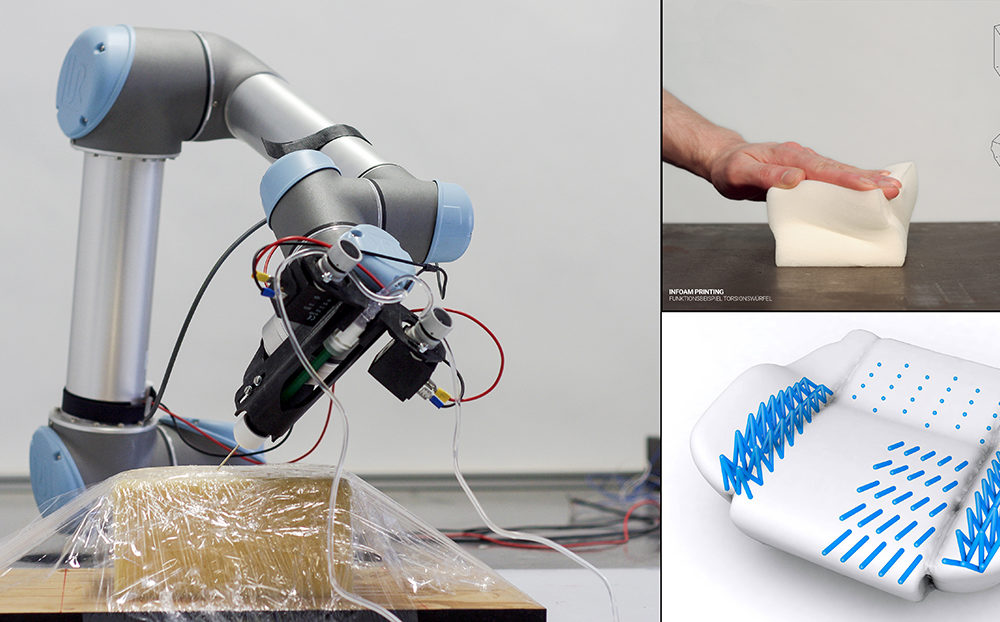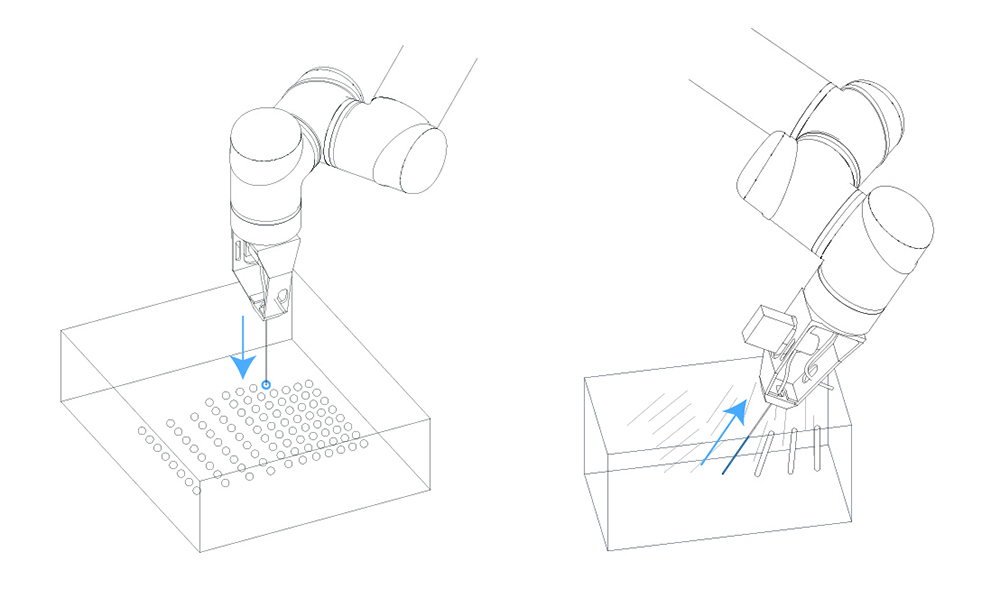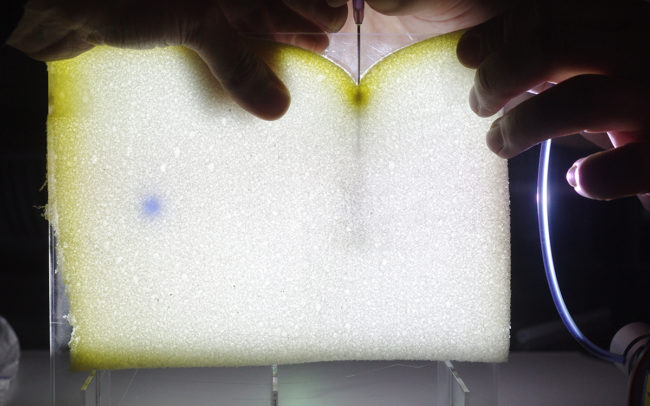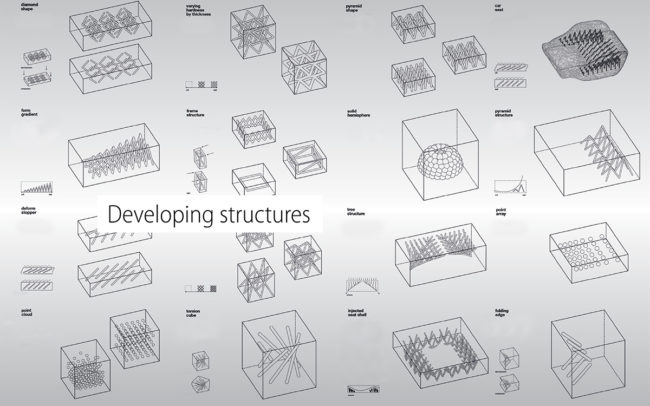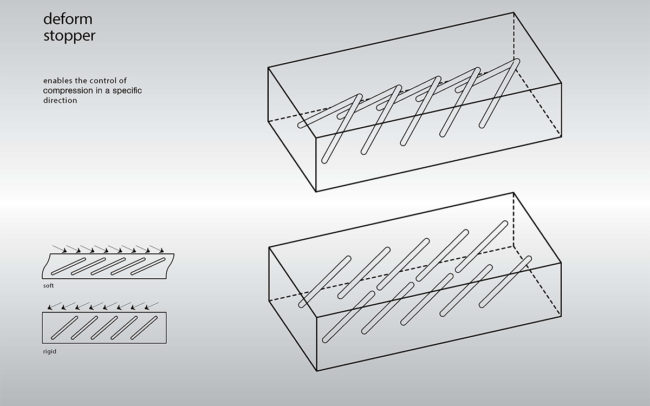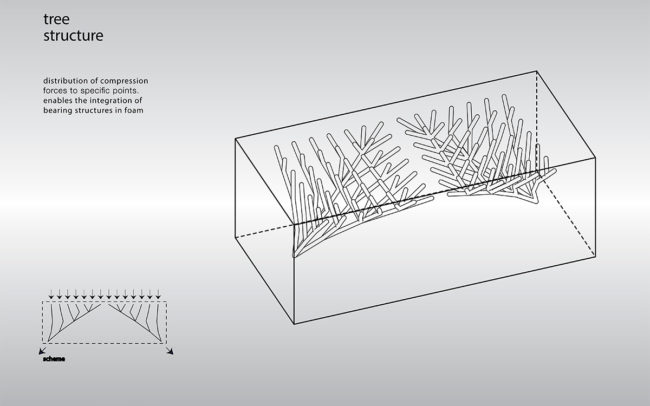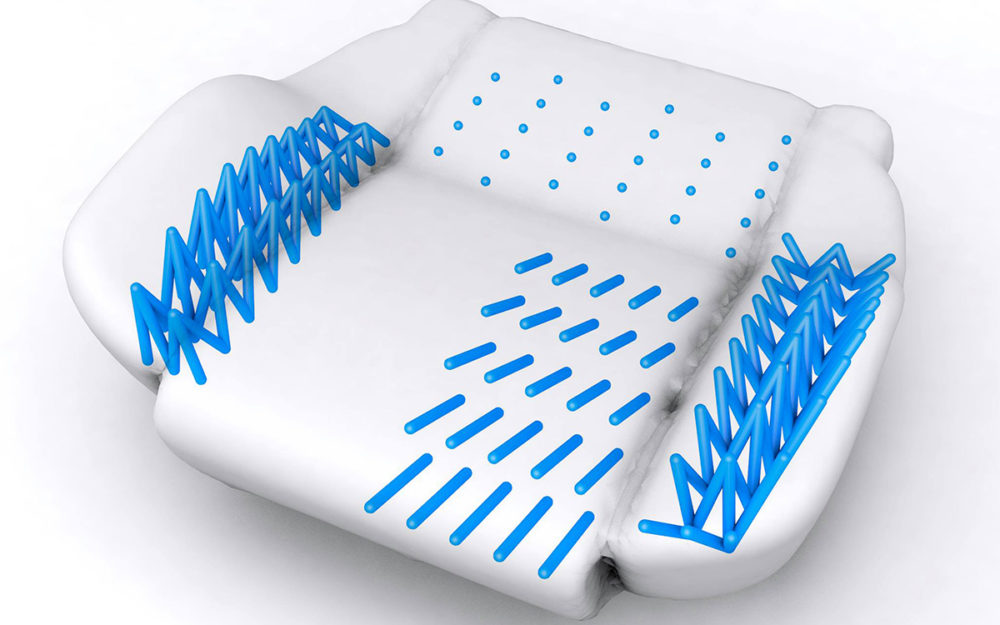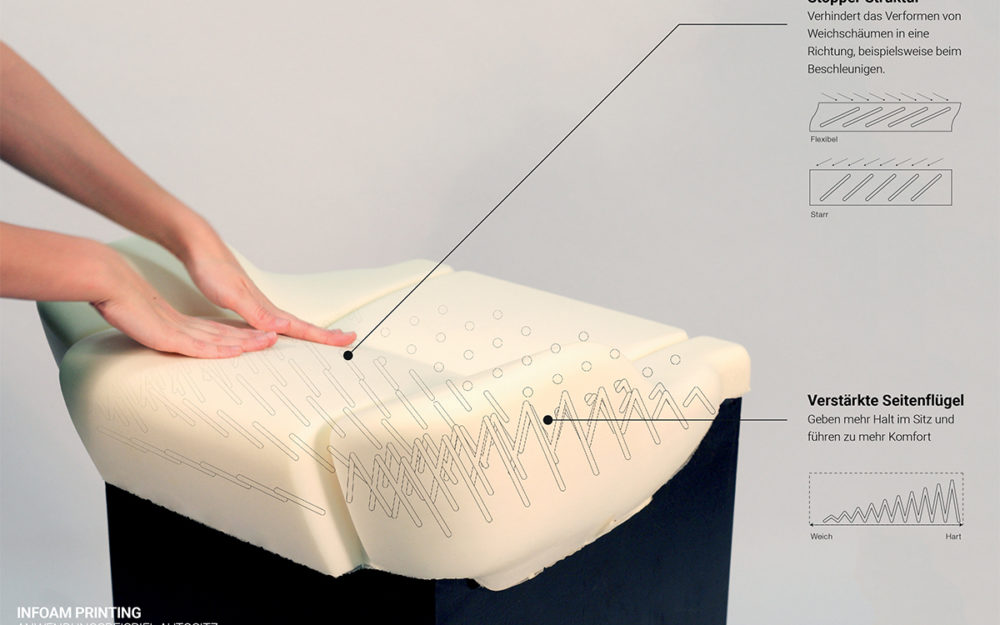3D printing smart foam elements
InFoam Printing is a novel production process to alter the properties of flexible foam. By injecting a hardening material, we are able to create complex geometries inside the foam. Therefore, we use parametric modeling software to generate the desired structures and to inject the material via robotic arm. For prototyping purposes we designed and constructed a customized injection tool. The initial idea for this project was to give the flexible foam a skeleton, which is able to distribute forces differently and create new kinetic effects.
The idea of InFoam Printing came to life during a five days workshop held by Covestro in cooperation with the architecture faculty of the FH Münster MSA. The InFoam Team, consisting of Sascha Praet and Dorothee Clasen (Designers from Cologne, KISD) and Adam Pajonk (Architect at FH Münster). When the initial idea showed a lot of potential, a research project of six months was founded to explore the possibilities and limits of this technology more in detail.
Printing geometries
Since the material is injected by a needle and in a fluid state, two basic shapes can be realized: Spheres and lines. Their size and resolution can be defined by the foam’s cell structure and the injection parameters, such as the injection amount per second or the speed of the needle moving in or out of the foam. Various structure-types can be realized, combining the mentioned basic shape elements. The structures are designed via Rhino and Grasshopper the parametric and converted into g-code for the robotic arm and the attached injection tool. This injection system gives a wide range of possible geometries. At the current state we are injecting a polymer resin which can be altered in a wide range of stiffness. This gives us the possibility to explore various material-based interactions between the foam and the injected geometry. Of course the injection of other materials, such as thermoplastic or shape memory materials will be another challenging and interesting topic, that needs to be explored in the future.
Altering the foam’s properties
By injecting structures, the foam can be altered partially in its degree of hardness. An effect that can be used in various products and normally requires many manufacturing and production steps. Traditionally, foams with different qualities have to be cut and then glued together again to achieve this kind of variation in hardness. It is also possible to change the foams kinetic behavior when exposed to compression. By implementing lines into a foam cube for example, you can give the foam cube a torsic behaviour. Or allow the foam to be only deformable into one direction and remain stiff if the same pressure is applied from the opposite direction.
Future applications and flex foam manufacturing
In the future, InFoam Printing can be used to simplify the manufacturing process of flex foam composites. Producing a foam element with two basic degrees of stiffness for example, is a common manufacturing procedure, but can be troublesome, since the components for such a process highly correspond with environmental conditions (e.g. room temperature or the flow behaviour of the expanding PU foam). Therefore InFoam Printing offers a much easier manufacturing solution and furthermore the possibility to vary the foams stiffness at desired areas at any given time or allows building complex stiffness gradients.
InFoam Printing can also be used to improve the materiality and functionality of products with integrated foam layers. Since foam is used in a wide range of products, IFP offers various applications: Mattresses, upholstery, orthopedic shoe soles or car seats. Hereby the foam components can not only be individualised. Due to the integrated structure they can also gain totally new abilities. Structures in car seats can counteract forces or provide additional grip, mattresses can be individualized by using 3D scanned data of the user.


